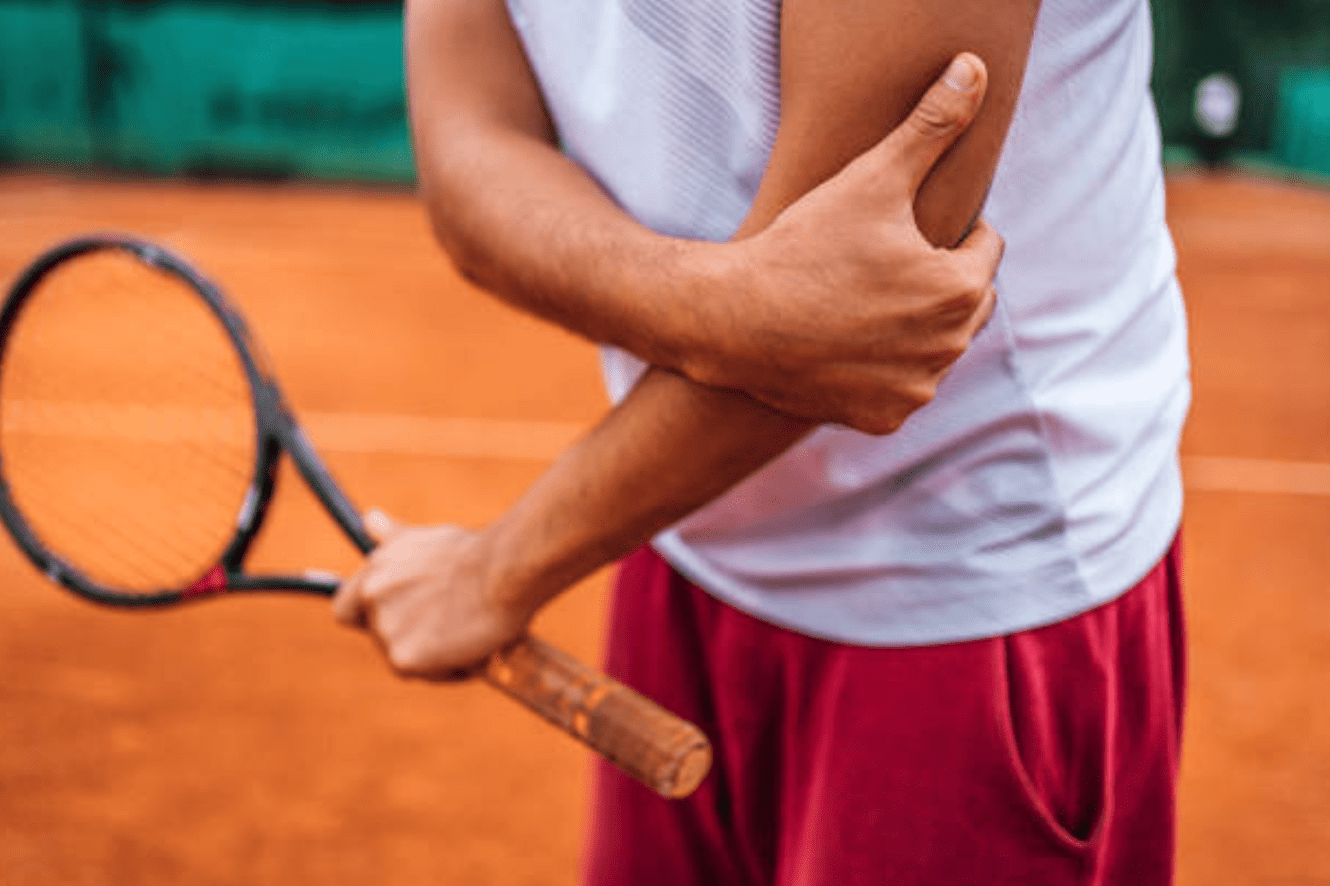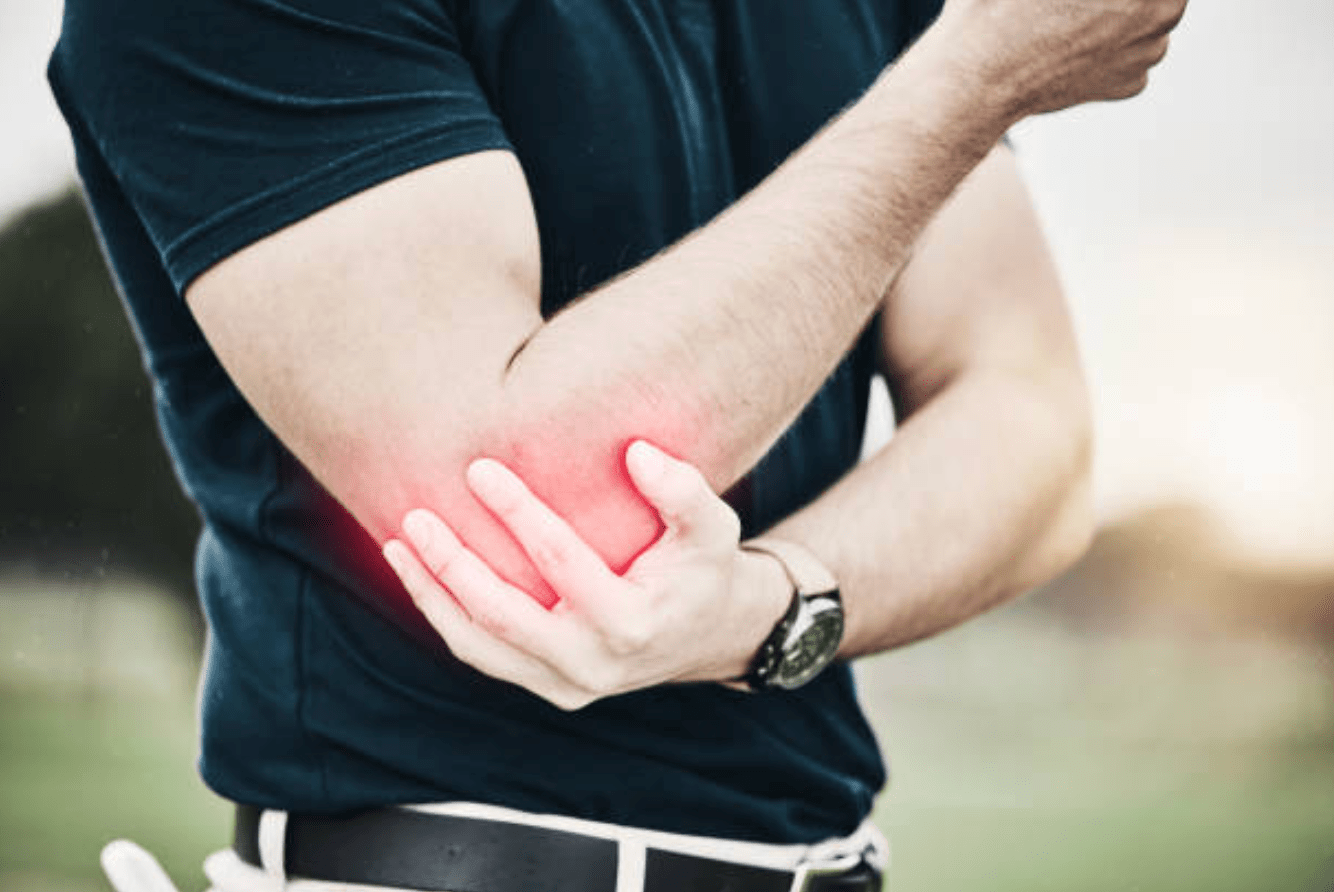One Sunday, when I was playing with my kids I felt a pain in my elbow.
However, I believed that it was a regular elbow pain and ignored it. But I was wrong. Thus, after consulting a doctor I came to know about tennis elbow vs golf elbow.
Tennis elbow and golf elbow can be extremely painful and make it difficult to do activities!
But should we simply ignore them and hope that they improve?
Absolutely, not.
So, in this blog, I will be talking about what differentiates these two conditions and how to deal with them. Let us begin.
What is tennis elbow?
Tennis elbow is a tendonitis type which affects the outside of the elbow. Many healthcare professionals call it lateral epicondylitis.

Tennis elbow is a painful condition and it occurs when the tendons on the outside of your elbow get inflamed and have tiny tears. It mainly occurs when the elbow tendons get damaged due to overuse of the forearm muscles.
Symptoms of tennis elbow
Tennis elbow and its symptoms are most common in people who regularly engage in activities that strain the elbow tendons.
These include sports like tennis, carpentry, and gardening. Frequent participation in these activities significantly increases the risk of tennis elbow, but there are other factors. These are some common symptoms of tennis elbow.
- Tennis elbow can be painful or tender to the touch.
- It might be difficult for you to grasp or lift objects which can be a key symptom of tennis elbow.
- Your tennis elbow might increase while using the wrist.
- Your fingers may feel numb or start to tingle
- Tennis elbow can hurt even when you’re not moving your arm.
How to treat tennis elbow?
If you don’t take care of your tennis elbow, it can worsen over time. Tennis elbow can make daily tasks such as opening the door or brushing challenging.
But don’t worry your doctor can suggest you different treatments to protect your tennis elbow from getting worse.
Here are some treatment options that your doctor might suggest.
- Reduce your daily involvement with activities that put stress on the tendons which cause tennis elbow symptoms.
- Avoid physical activities that worsen tennis elbow.
- Apply ice packs to the elbow for 20 to 30 minutes in every three or four hours. This can help to reduce pain and swelling.
- Tennis elbow pain and swelling can be controlled by nonsteroidal anti-inflammatory medications.
- Using a brace or splint can reduce stress on the injured tissues. It will also protect the injured tendon from further damage.
- Taping your forearm can help support your muscles more effectively, especially if you participate in sports.
- Getting a massage or pulsed ultrasound can improve blood flow and help you to heal faster.
- Physical therapy can help you stretch and strengthen your forearm muscles. This reduces the strain on your elbow tendons and alleviates the pain.
- Additionally, exercising your arm in various ways helps it become less rigid and more flexible.
If your tennis elbow is severe and basic treatments are ineffective, your doctor will thoroughly examine your elbow and review your medical history. They may perform tests such as X-rays, MRIs, or electromyograms to determine if there is a nerve problem.
- Dry needling: It is similar to acupuncture, but it targets tight spots in the tendon to reduce tightness, and inflammation, and promote healing.
- Cortisone injection: While cortisone can help reduce inflammation and pain, it is not a long-term solution.
- Surgery: If your tennis elbow is severe, you may need surgery. The surgeon will repair the tendon and remove any remaining scar tissue or bone spurs.
What is a golfer’s elbow?
Golfer’s elbow is a painful condition that affects the tendons in the elbow. As a golfer’s elbow is tendonitis around the medial epicondyle, doctors often call it medial epicondylitis.

Golf elbow is caused due to overuse or repeated flexion movements. However, this condition is similar to tennis elbow, but the golfer’s elbow affects the inner side of the elbow, while the tennis elbow affects the outer side.
Symptoms of a golfer’s elbow
The symptoms associated with a golfer’s elbow can suddenly or gradually increase. Golfer’s elbow begins with pain and tenderness, slowly it progresses and further symptoms occur if left untreated.
Additionally, movements such as swinging a golf club can make the tendonitis worse and cause more pain.
So, here are some common symptoms of tennis elbow.
- You will experience pain in the elbow or tenderness when you touch. Sometimes the pain might also extend along the inner side of the forearm. Hence, this pain typically gets worse with specific movements.
- Golfer’s elbow might cause numbness or tingling sensation. This condition is mostly occurring at the ring and little fingers.
- You might feel achy pain at the inner elbow during or post-activity.
- In addition to tingling or numbness, the hands and wrists may become weaker than normal.
- While making a fist, your elbow may feel stiff and painful.
How to treat a golfer’s elbow?
If you believe you have a golfer’s elbow, you should seek treatment as soon as possible to avoid symptoms getting worse.
Even if the pain isn’t severe, seeing a doctor is the best way to prevent serious golfer’s elbow issues.
Your doctor will recommend simple treatments for a golfer’s elbow, such as:
- Your doctor will most likely advise you to rest your arm and avoid activities that worsen your symptoms.
- Applying ice packs to the affected area can help reduce swelling and pain. Never apply ice directly to the skin; instead, use a towel.
- Stretching exercises on the forearm muscles can help to relieve strain on inflamed elbow tendons.
- Generic anti-inflammatory medications can help you in relieving pain and inflammation.
- A splint or brace can lower the stress on injured tissues.
- Physical therapy can help in speeding up the recovery process.
- Therapists frequently use pulsed ultrasounds to increase blood flow to injured tendons and break up scar tissue to promote healing.
- Occupational therapy helps to perform daily tasks easily. This is especially useful for people whose jobs can increase the possibility of developing a golfer’s elbow.
If your golfer’s elbow is more severe and basic treatments are not effective, your doctor may recommend advanced treatment solutions.
When you consult your doctor about your worsening golfer’s elbow, these might be the treatments they recommend.
- Cortisone injections: These powerful steroids are sometimes used by doctors to reduce inflammation and pain in severe tendonitis.
- Platelet-rich plasma therapy: This blood-spinning treatment stimulates the body’s natural healing system to heal the injury.
- Surgery: If other treatments fail, surgery to repair the damaged tendon is a treatment solution for a golfer’s elbow.
Causes of tennis elbow and golfer’s elbow
As we know these injuries can also result from repetitive wrist movements. So, here I will be discussing some of the most common causes of tennis elbow and golfer’s elbow.
- Racket sports: Overuse or improper technique while playing tennis or other racket sports can result in tendon injury. Using an undersized or overly heavy racket may result in injury.
- Throwing sports: Sports such as golf, archery, football, and javelin throwing which require elbow extension can result in a golfer’s elbow.
- Weight training: Weight training can result in elbow injuries if done incorrectly. For example, lifting weights incorrectly, such as bending your wrists while doing bicep curls, can strain and tear the muscles and tendons surrounding your elbow.
- Professional demands: Certain jobs, such as construction, plumbing, painting, or carpentry, require forceful, repetitive movements of the wrist or arm, which can result in tennis or golfer’s elbow.
- Daily tasks: Repetitive tasks such as typing, meal preparation, raking, and gardening raise the risk of elbow injuries. Even leisure activities such as knitting or playing an instrument can cause tennis or golfer’s elbow.
What is the difference between tennis elbow and golfer elbow?
As mentioned above the most significant difference is where you experience pain. Tennis elbow pain is felt on the outside of the elbow. Golfer’s elbow pain occurs on the inside of the elbow.

However, there are some conditions and injuries that can cause elbow pain, so it is best to consult your doctor for a proper diagnosis and treatment.
How much time does it take to recover from tennis or golfer’s elbow?
The answer to this question depends upon your injury. Keep in mind that these are types of tendonitis, which can have a variety of recovery times.
If you’re just starting to notice symptoms, rest and ice should help resolve the issue within 1-3 weeks.
At that point, we would recommend starting an exercise program to strengthen the undertrained muscles. This will prevent re-injury.
People with these conditions can play their preferred sports and activities after some time.
Summing up
Tennis elbow and golfer’s elbow are two types of tendonitis that affect different areas of the elbow.
However, understanding the distinctions between tennis elbow and golfer’s elbow is critical for proper diagnosis and treatment.
These types of tendonitis can cause severe pain and limit daily activities, especially if not treated.
Thus, it is critical to perform the right treatment solution to ensure a quick recovery and avoid future complications associated with these elbow conditions.
In this blog, I tried to cover everything about golf elbow vs tennis elbow. For more such information, stay connected to the Supportive Joints blog.